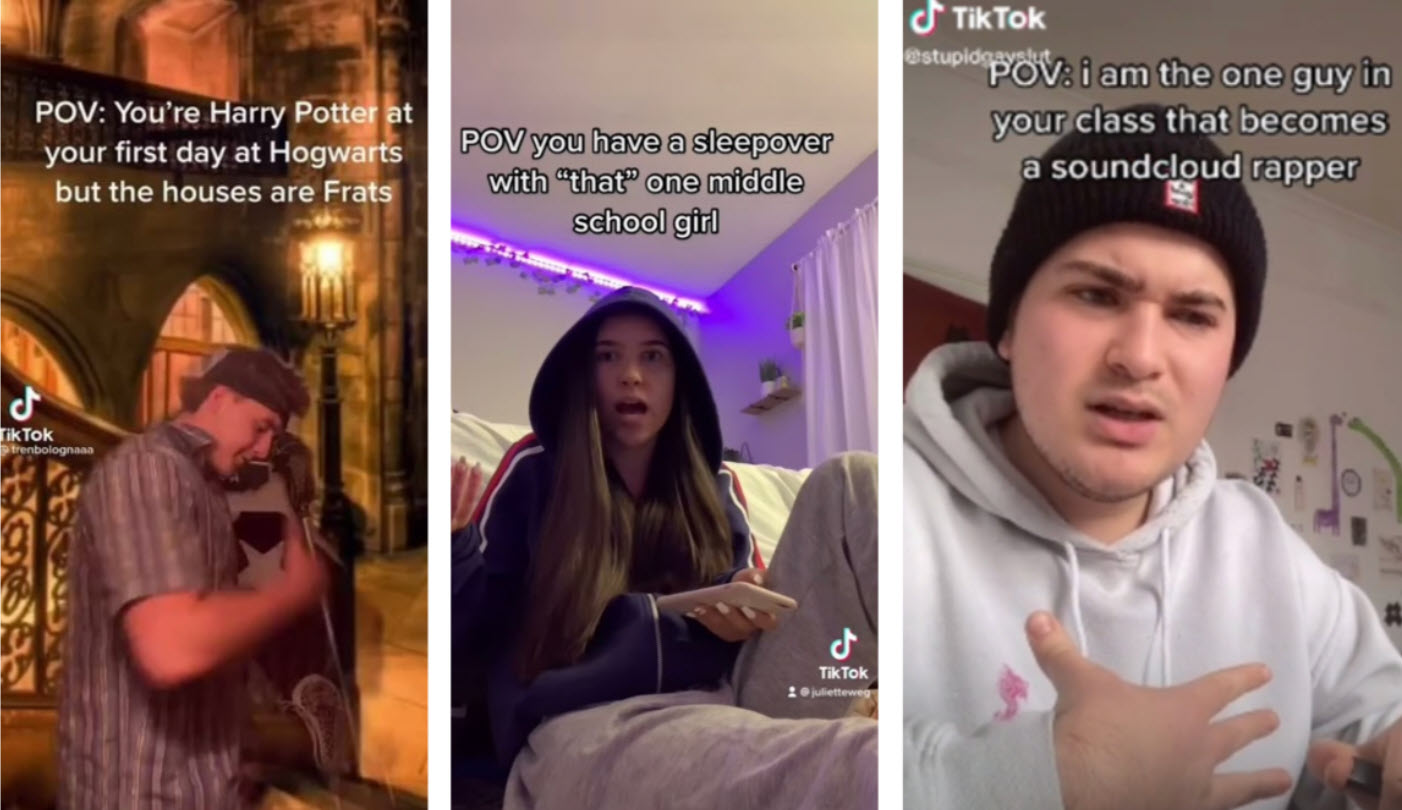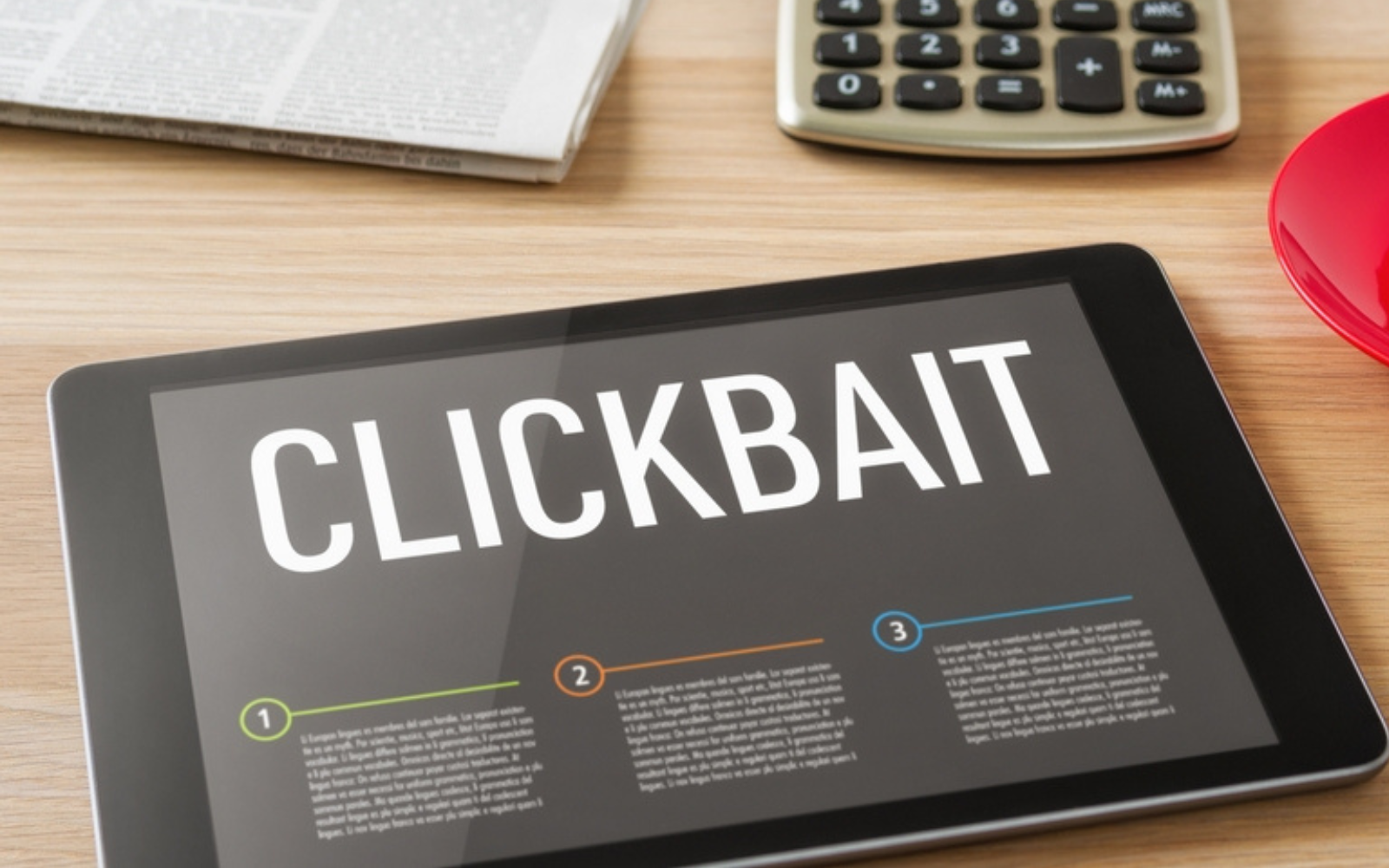Ever found yourself helplessly drawn to an irresistibly intriguing headline, only to be met with disappointment?
If so, you might have been a victim of clickbait, the irresistible rogue of the internet.
It’s true – clickbait gets a bad rap. Often, clickbait headlines are highly sensationalized, spammy, and all-around misleading. But they do work. Why is that?
There are a few reasons, and we’re excited to dig into them in this article.
But most importantly, we’ll cover a few clickbait headlines that genuinely work without leaving your audience rolling their eyes.
What Exactly Are Clickbait Headlines?
Clickbait headlines are headlines (or “titles”) that are used to grab a reader’s attention, usually by using emotion-provoking, sensationalized language.
Clickbait headlines might use curiosity or exaggeration to drive users to click on, read, and share an article.
Unfortunately, clickbait is notorious for getting clicks, but often at the expense of accuracy or providing meaningful content.
They’re kind of like flashy billboards on the internet highway, but the destination might not always live up to the hype.
But clickbait headlines can be effective if used appropriately. The key is to use headlines that are enticing but don’t mislead (or tick off) your audience.
Why Clickbait Headlines Work
Again, these headlines do work, and the data is there to prove it.
A 2023 study analyzed over 100 million articles to determine which headlines drove the most shares. Phrases like “for the first time!,” “you need to…,” and “…of all time” were responsible for generating the most engagement.
It’s theorized that clickbait headlines work because they tap into our curiosity and desire for instant gratification.
Clickbait headlines are designed to evoke strong emotions, making people more likely to click on the link to satisfy their desire for quick entertainment or information. Our brains often can’t resist the temptation!
That said, it’s important to note that the phrasing of today’s clickbait headlines has changed.
Older studies have highlighted the effectiveness of “clickbait-y” headlines, with headlines like “…will make you” and “You need to know” topping the charts.
These types of headlines seem to be less common today.
14 Clickbait Headline Examples That Actually Work
One of the biggest reasons why clickbait gets such a bad rap is that people often exaggerate the information or simply make claims that can’t be true.
If you mislead your readers, this can certainly backfire – causing you to lose credibility and potential customers.
Instead, use some of these clickbait headline formats below to craft titles that grab attention while maintaining readers’ trust in your brand.
1. “The Perfect X Doesn’t Exi-“
 Source: “The Perfect X Doesn’t Exi-” Image Search results; Google; Feb 2024
Source: “The Perfect X Doesn’t Exi-” Image Search results; Google; Feb 2024You’ve likely seen this headline around a lot, as it’s been common in articles and memes on social media.
This headline works because it is both clever and funny, playing on the idea that something ideal doesn’t exist when, in fact, it is tangible/achievable if only (…).
It’s a playful way to engage the audience and subvert their expectations, making the content more memorable and shareable.
Here are a few examples of headlines that follow this format:
- “The Perfect Social Media Calendar Doesn’t Exi-”
- “The Perfect Facebook Ads Template Doesn’t Exi-”
- “The Perfect Vegan Meal Plan Doesn’t Exi-”
2. “X Things You…”
“X Things You…” headlines work well because they quantify the information that will be found in the article and make an appeal directly to the reader (“you”).
The “you” here entices readers to find out more about themselves (at least, this is what is implied).
You can use this headline like so:
- “8 Things You Need to Do Before Proposing”
- “10 Things You Need to Do Before Buying a House”
- “19 Things You Don’t Know About Your Favorite Sports Teams”
People will be intrigued to find out what exists on the other side of the click!
3. POV
The “POV” (point-of-view) headline trend is a recent one, first circulating on TikTok.
Typically, these headlines are used on videos (TikToks, Instagram Reels, YouTube Shorts, etc.) where the camera follows the main subject as they travel, live their life, encounter a challenge, etc.
 Image from trillmag.com, Feb 2024
Image from trillmag.com, Feb 2024The POV headline can be used for literal POV videos, but it can also be used as clickbait.
Sometimes, it’s used in a humorous way, where you don’t see the actual POV of the subject but a curated experience they want you to believe in/follow.
Here are a few examples of POV headlines:
- “POV: You just bought the viral Skims bodysuit”
- “POV: You think SEO doesn’t work”
4. “…they don’t want you to know”
In today’s society, there is a lot of paranoia about “the powers that be,” whether that means corporate America, politicians, “experts,” academia, cancel culture – you name it.
With that, consumers are constantly on edge about being lied to or misled.
The “..they don’t want you to know” headline works in that it implies that the article shares information that’s typically hidden by the “experts.”
It’s information that you/your brand is willing to share, even in the face of opposition from the powers that be.
Here are some examples of headlines in this format:
- “5 Things Relationship ‘Experts’ Don’t Want You to Know About Dating”
- “10 Things Most Business Coaches Don’t Want You to Know About Sales”
- “6 Things Most Doctors Won’t Tell You About Dieting”
5. Piggybacking
Whether or not you already have some brand recognition, you can use the “piggybacking” technique to build some authority and drive clicks.
This involves referencing a well-known figure or company in relation to your brand/post.
This format implies that you have the support of this thought leader or brand in sharing the information in your article.
Some examples of this are headlines like:
- “Kim Kardashian LOVES This Swimsuit Brand”
- “Forbes Entrepreneur Shares X Tips…”
- “Dancing with the Stars Celeb Reveals…”
- “Nike Swoosh Designer Teaches Us…”
If you are fortunate enough to feature a prominent figure – or simply do a follow-up piece about an existing news story or interview – then you can use “piggybacking” to grab attention and attract visitors.
6. “This Is What…”
In this clickbait headline example, the “this” makes people curious about what they will find when they click through to the page.
This is a common clickbait headline, but it can also go awry if you are too secretive in the title.
Avoid titles like “This Is Why You’re Losing Money” or “This Is Why You’re Lonely,” as these are too broad and cryptic.
Instead, aim for headlines like:
- “This Is Why You’re Not Seeing an ROI on Your Marketing”
- “This Is Why Business Owners are Investing in Bitcoin”
In the later examples, you give readers more context and make them less skeptical about what your content is about.
7. “… of the year”
The No. 1 headline phrase that showed up in BuzzSumo’s study was “…of the year.”
This headline is commonly used to “round up” the best information on a given subject (best women’s boots, best movies, best marketing templates, etc.).
Specifically, BuzzSumo found that headlines using “of the year” were mostly concerned with rankings and awards.
Here are a few examples:
- “Best Websites of the Year”
- “Best Games of the Year: 2023”
- “10 Best Movies of the Year”
- “Best Entrepreneurs of 2023”
8. “This Is How…”
“This is how…” clickbait headlines intrigue readers by keeping “this” a secret while giving a hint as to what the content is about.
With this headline, the goal here is to not be too cryptic. Otherwise, readers might get frustrated by your obviously clickbait-y title.
Instead, be more descriptive and literal so they know what to expect on the “other side” of the click.
Some good examples of headlines in this format include:
- “This is How Business Owners are Saving Thousands on Their Taxes”
- “This is How Parents Can Relieve Stress Throughout the Day”
- “This is How Designers Can Make More Money With Fewer Clients”
9. “Did You Know…”
This headline is a favorite because it appeals directly to the reader (“you”) and asks them a question that challenges them and implies that they’ll discover the correct answer when they read the content.
If they are correct, they are validated. If they are incorrect, they can read the article and learn something new!
Here are a few ways to use this format effectively:
- “Did You Know That Influencer Marketing is Dying? Here’s What to Do Instead”
- “Did You Know That SEM is Out and SEO is In? Strategies for 2024”
- “Did You Know That Exercising Brings THESE Benefits?”
- “Did You Know HOW Healthy Mushrooms Are for Your Brain?”
10. “The Last … You’ll Ever Need”
This headline is a great one for ecommerce because you can position a product as being the last X a customer will ever need.
For products that customers usually have to buy on a regular basis, this can be a huge relief.
For example, if you know that people often have to buy hair flat irons every three years, you can market your flat iron as being “The Last Flat Iron You Will Ever Need” if it lasts 10+ years.
Customers will be happy to know they can save time or money by making a one-time purchase.
Here are a few more examples of this headline in action:
- “The Last Winter Jacket You’ll Ever Need”
- “The Last Capsule Wardrobe You’ll Ever Need”
11. “You Won’t Believe…”
Headlines like “You Won’t Believe THIS Hack!” are often the worst offenders when it comes to clickbait-y, misleading titles.
To be effective, you’ll want to be a bit more descriptive.
Some examples of “You won’t believe…” headlines done right include:
- “Amazing Inventions You Won’t Believe Exist”
- “You Won’t Believe This Dog’s Dance Moves!”
- “166 Photos You Won’t Believe Are Not Photoshopped”
- “50 Random Facts You Won’t Believe Are True”
12. “Why You Should…”
If you’re going to be bossy and tell readers what to do, you might as well give them a reason.
With this headline, you appear to give readers a helpful tip while enticing them to read more.
Headlines like “Why You Should Stop X and Do Y,” “Why You Should Stop Buying X Product,” or “Why You Should Invest in Real Estate Now” tell people what the content is about while leaving the “why” a mystery – until they click through to your site.
Here are a few creative ways to use this headline:
- “Why You Should Ditch the ‘Diet’ and Go Keto Instead”
- “Why You Should Stop Scrolling and Try Notion”
- “Why You Should Create a Vision Board for 2024”
13. ‘LIVE…’
People love original content. So, if you share a live video or webinar, they’ll be inclined to click because they know they won’t find this content anywhere else.
This especially works for ads that direct users to a live webinar, video session, or conference.
You can set a timer so people only have access for a limited time.
Here are some examples of “LIVE” headlines:
- “LIVE: Nike CMO Shares Her Tips for Building a Memorable Brand”
- “LIVE: Digital Nomad Conference”
- “LIVE Video: How to Level Up Your Marketing Agency”
14. “See…”
Sometimes, seeing is believing – and people want to see the “secret sauce” for themselves before they put the information into practice.
“See…” headlines create a sort of information gap where people get the impression that you have something interesting they just won’t want to miss.
You should follow up this phrase with an urgency-creating headline like:
- “See Results From Your Marketing in Just 2 Weeks”
- “See These Seo Strategies in Action – Before Your Competitors Do!”
How To Use Clickbait Headlines Effectively
In this guide, we’ve shared a few examples of how clickbait headlines can work for your site – without jeopardizing your brand’s credibility or reputation.
The key is to use headlines that intrigue viewers without misrepresenting the content they will find on the page.
Grab their attention, give a hint as to what they will find once they click, but leave just a touch of mystery!
When used the right way, there’s no doubt that clickbait headlines work well when it comes to grabbing a user’s attention and driving clicks.
More resources:
- The 30 Best Landing Page Examples Of 2023
- How To Write A Headline: 10 Tips For Getting It Right
- Perfectly Optimized Content From Start To Finish
Featured Image: Zerbor/Search Engine Journal





